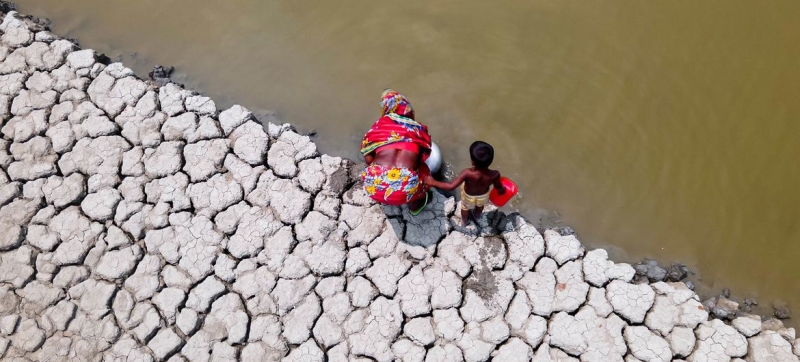
Climate shocks, including prolonged El Niño, are leading to humanitarian crises. UN warns of growing food shortages in 18 ‘hunger hotspots’ Humanitarian Aid
At least 18 countries and regions of the world already suffering from food shortages could face even greater famine if aid is not received urgently. UN humanitarian agencies warned about this on Wednesday.
Many hunger hotspots are in Africa, particularly Sudan, and fears of widespread famine also persist in Gaza, according to a new report from the Food and Agriculture Organization (FAO) and the World Food Program (WFP). .
Read also:
Humanitarian situation in Sudan’s El Fasher worsens
“By the time mass famine is declared, it will be too late—many people will have already died from starvation,” said WFP Executive Director Cindy McCain.
“In Somalia in 2011, half of the 250,000 people who died of hunger died before widespread famine was officially declared. At that time, the world did not heed the warnings, and the consequences were catastrophic. We must learn the lesson and act now to prevent these hot spots from growing into famine fires,” she added.
UN agencies report on the situation in 17 countries, as well as the drought-stricken cluster of Malawi, Mozambique, Zambia and Zimbabwe, warns that Mali, Palestine, Sudan and South Sudan remain at the most critical levels and require the most urgent attention.
Haiti has been added to the list of “hot spots” amid escalating violence and humanitarian threats.
South Sudan
The crisis in South Sudan is so severe that the number of people vulnerable to malnutrition and starvation is projected to nearly double between April and July 2024 compared to the same period in 2023.
According to the report, limited domestic food supplies and the depreciation of the local currency are leading to a sharp increase in food prices.
The situation will be aggravated by expected floods and further waves of conflicts in the country . In addition, a further increase in the number of returnees and refugees from Sudan is likely to increase severe food shortages among both new arrivals and host communities.
The situation is getting worse
Chad, Democratic Republic of Congo, Myanmar, Syrian Arab Republic and Yemen are also of serious concern, the report notes.
Many people These countries are facing severe food shortages. Life-threatening conditions are only expected to worsen in the coming months.
Since October 2023, the Central African Republic, Lebanon, Mozambique, Myanmar, Nigeria, Sierra Leone and Zambia have joined Burkina Faso, Ethiopia, Malawi, Somalia and Zimbabwe on the list of “hunger hotspots” where severe food shortages are likely to continue will worsen further in the near future.
Climate extremes
Conflict remains a major cause of food shortages, but A joint report by WFP and FAO highlights that climate shocks, including the protracted El Niño, also lead to crises.
Although it is a weather phenomenon in Now coming to an end, “its impacts have been severe and widespread,” the report’s authors note, citing drought in southern Africa and widespread flooding in the continent’s east.
What concerns the “looming threat” of La Niña, which UN agencies estimate is expected to significantly impact rainfall. This could lead to “serious consequences” in several regions, including floods in South Sudan, Somalia, Ethiopia, Haiti, Chad, Mali and Nigeria, as well as Sudan.
Both droughts and floods have the potential to destroy livelihoods, the report warns. UN agencies are calling for immediate and widespread humanitarian action to prevent further famine.
